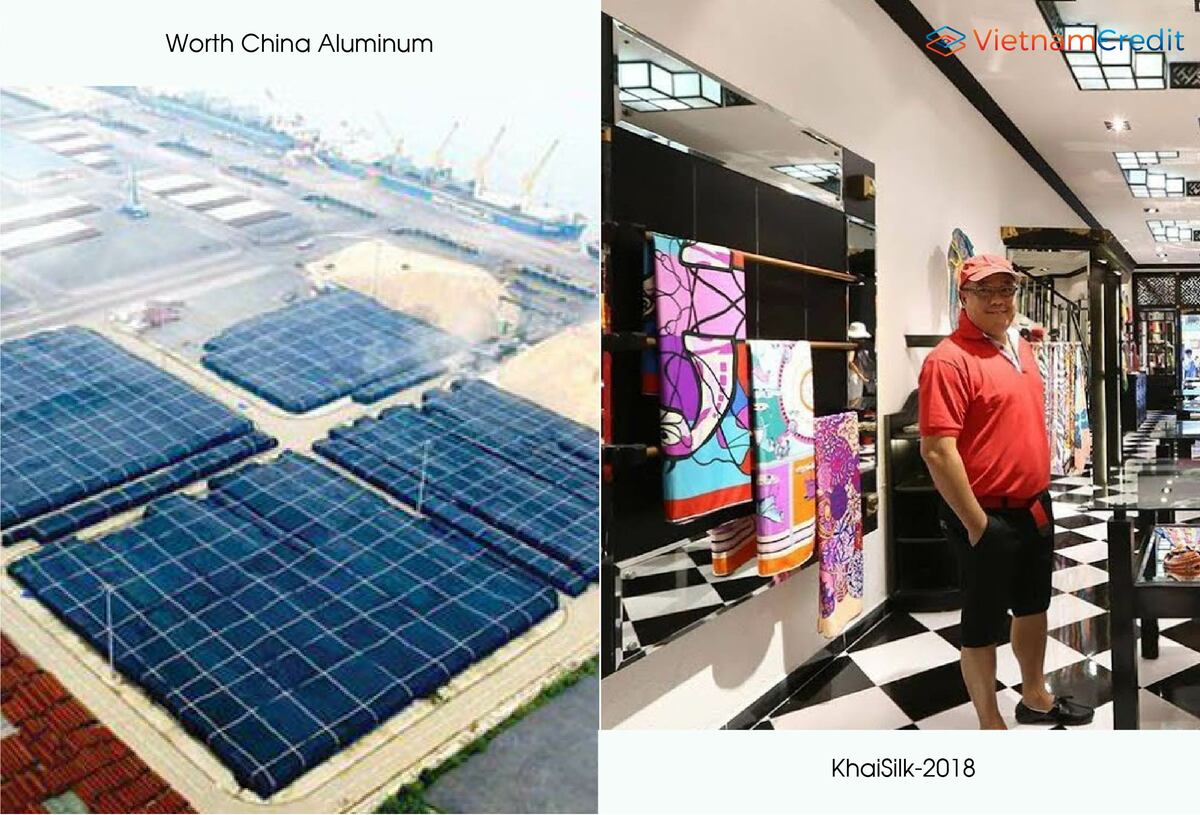Counterfeit goods from across the border have been smuggled along the trail into Vietnam for many years. This is very unpredictable and difficult to control. Not only the USD 4.3 billion worth aluminum lot which has just been exposed, but goods like silk, consumer electronics or plywood products were also alleged to originate from China but "disguised" in Vietnamese goods.
“Disguised” goods
The case of millions of tons of Chinese aluminum imported to Vietnam, waiting to be exported to the United States has been discovered since 2016 and is currently still in the process of handling. However, this is not the only product that China wants to take advantage of Vietnam to evade taxes.

In 2018, people were surprised that products by Khaisilk, a high-end brand providing silk which is considered as a national spirit, were fake. Social media spread the image of the label "Made in China" next to the label "Made in Vietnam" on the same silk product. The incident then became a heated issue among public opinion. People boycotted the brand while its owner gave up selling the product and admitted to having replaced Chinese label with Vietnamese origin tags. After that, the confidence of Vietnamese consumers was hurt and the reputation of Vietnamese brands was affected when a big brand like Khaisilk also cheated.
As for electronics and household appliances, China is considered the world’s factory of these items and can counterfeit products of major manufacturers from the US, Germany, Japan or Korea. Therefore, the import of components or even semi-finished products from China to Vietnam to assemble and label Vietnamese origin, and sell in the domestic market or export has been happening for many years in the context of globalization and specialization.
However, importing components to assemble and export the finished products to foreign countries is governed by a variety of laws and WTO rules, with the most favored nation (MFN) rate and the retrospective rule on components origins. This helps products to be managed accurately, and authorities determine the right localization rate in each country and thereby determine the value of products and how to apply tariffs and non-tariffs.
On the other hand, for products consumed in Vietnam market, the regulation on determination of the localization rate to assess to what extent the product is domestically produced to be labeled "Made in Vietnam" or "Produced in Vietnam" does not exist. Recently, the Ministry of Industry and Trade has just taken action and started to develop a guiding circular for this after Asanzo was accused of importing Chinese goods and labeling "Made in Vietnam" on the products.
In addition to silk and electronic products, Vietnam's exported plywood products are also being paid attention by the customs and inter-smuggling forces of the National Steering Committee 389. Accordingly, there have been “foreign” investors with small amount of capital setting up workshops to import finished and semi-processed wood into Vietnam, then export to other countries.
Why is Vietnam being taken advantage of tax and origin?
Vietnam is currently the most open market in the world. According to statistics, Vietnam currently has about 17 bilateral and multilateral free trade agreements (FTAs) with other economies, including many giants such as ASEAN, EU, Japan, Australia, and New Zealand. However, besides reducing and eliminating import taxes, the screening mechanism of the non-tariff policy system of Vietnam is relatively weak. In addition, counterfeit goods from across the border have been smuggled along the trail into Vietnam for many years, which is very unpredictable and difficult to control.
Normally, member countries of the WTO will have SBS barriers (referred to as animal and plant quarantine, epidemiology related to human and animal health) and technical barriers (BTB). For example, when Vietnam had African swine cholera, Japan and Taiwan immediately banned the import of all kinds of pork products from Vietnam such as (pork flakes).
Meanwhile, the management of technical standards and barriers from other countries to Vietnam is still a difficult problem. For example, a series of old Chinese lines and equipment are still imported into Vietnam through investment capital, mergers and acquisitions. Many factories manufacturing cement, iron and steel, thermoelectricity, plastic production, recycling plastic waste have used the old technology from China for many years.
In addition to lax management, the increasingly sophisticated violation the laws of rivals have made Vietnam vulnerable to trade battles with major countries. In particular, many countries have directly subsidized product prices and exports to unfairly compete with Vietnamese goods on the home market as well as make Vietnamese customers suspicious.























































